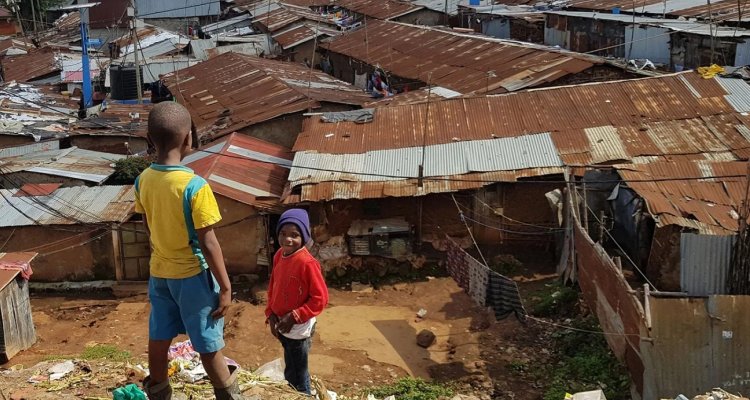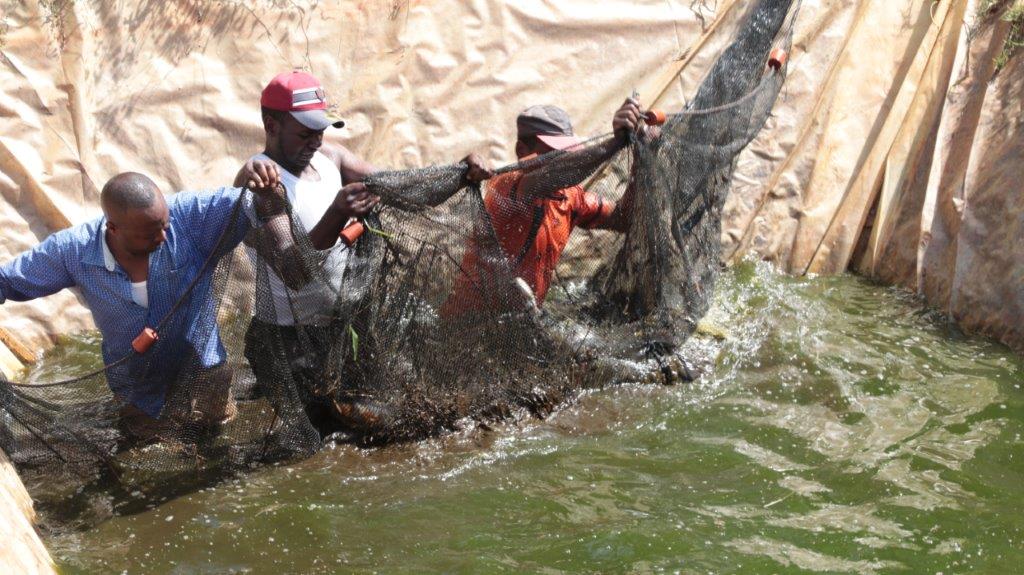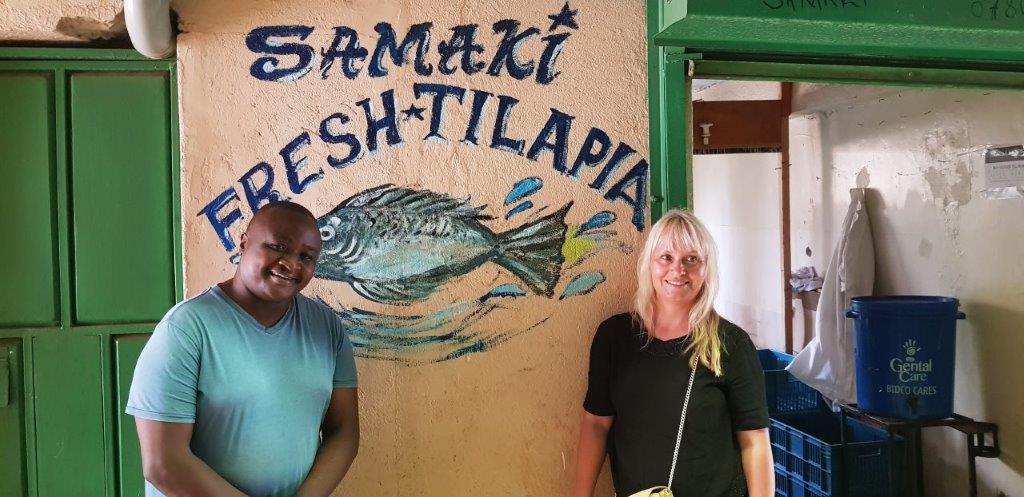
Background
Fish enriches life in Kenyan slum
How do you make sure people living in constantly expanding slum districts have access to more food and healthier food? In a research project by Wageningen University & Research, fish farmers in the Kenyan countryside were linked up with street sellers in the slum district of Kibera. This not only improved the diet of Kibera’s inhabitants but also created a new market for the fish farmers.
The meals consumed in the rickety homes in Kibera, a slum in the Kenyan capital Nairobi, are often monotonous. The main dish is a filling maize porridge, but that means that the average person in Kibera does not get enough nutrients; there is usually not enough proteins and vegetables. To answer the question of how to make diets in the continually expanding district of Kibera more nutritious, Wageningen University & Research carried out a four-year research project called ‘Feeding Cities and Migration Settlements’.
It is estimated that nearly a million people live in Kibera, the largest slum district in Kenya, and its population is still growing rapidly. New people arrive every day. They come from the Kenyan countryside, where there is a shortage of food. Climate change is causing a lack of rainfall and consequently water shortages in more and more parts of Kenya, making it increasingly difficult to grow food. There is also a chronic lack of land, and large families are being forced to make do with smaller and smaller plots. But it is difficult to produce food in Kibera itself, and everything has to be brought in from outside the city.
We can apply the knowledge we got from this project in Kibera in numerous other places
Katrine Soma is the project manager in the research project. Over the past few years, she has used workshops and research to strengthen links between fish farmers in rural areas and street sellers in Kibera. As a result, many people in Kibera are now able to get hold of fish and the fish farmers can offload more fish, explains Soma. Now two tons of fish are sold per week in Kibera.
Soma already had a network in Kenya before she started on the project in Kibera, thanks to another, earlier research project. “I was able to build on that. What is more, we can apply the knowledge we have got from the current project in Kibera in numerous other places.” But that does not mean the know-how can simply be transferred as is, she says. “That’s not even the case within Kenya, as there are such big differences between ethnic groups and slum districts. It is always context-dependent and also depends crucially on collaboration with the local people.”

Kibera is a complex slum district whose inhabitants are from many different ethnic groups. Most come from the area around Lake Victoria but some from other parts of the country. “They migrate to Kibera in search of work and a better future. It is cheap to rent accommodation in the slum – about twenty euros a month.” But there are often no facilities such as running water or electricity, certainly not consistently. Residents also often do not have access to sufficient food or nutritious food.
“Food security is not only about having enough food of a sufficiently high quality. It is also about having a big enough income and knowing you will earn enough tomorrow to be able to afford the food.” In addition, many inhabitants of Kibera are responsible for the family members they left behind in the countryside. “That is another aspect of food security.”
The only way to enter the slum district safely is with community leaders
Soma organised a workshop for street sellers, fish farmers and local leaders during the pandemic. The aim was to resolve bottlenecks, nurture trust and breathe life into a new setup for selling fish. But you can’t just walk into Kibera (which is divided into several subdistricts), explains Soma. “You need community leaders who can introduce you to the local residents. That is a good way to access households living in the slum district safely.”

The community leaders brought her into contact with the street sellers, including fish sellers, and with households themselves who could tell her what the biggest challenges were. “We discovered there was a real shortage of nutritious and affordable fish in Kenya.
The number of wild fish is declining and fish are increasingly being imported from Uganda, Europe and China. But many people in Kibera don’t have enough money to buy good-quality fish.” Most of the fish sellers in Kibera are women. They spend the day cleaning and cooking the fish, then sell it in the evening. Their husbands often work long hours in factories.
Soma also made contact with fish farmers in Nyeri. Soma discovered that the fish farmers were unable to sell 70 per cent of their high-quality fish (mainly tilapia) because the fish were too small for the higher end of the market, such as restaurants, hotels, supermarkets and schools. Soma: “The problems of supply and demand could be solved by bringing affordable small sized fish to Kibera.”
- Unfortunately, your cookie settings do not allow videos to be displayed. - check your settings
But setting up a dialogue between the two groups was quite complicated, says Soma. “They used different words, for example for the weight of the fish.” The two groups had once been in conflict during an earlier election, so a lot of work was required to nurture trust between them. It eventually proved possible to connect up the two groups, explains Soma. “A fish farmers’ association made sure the fish could be transported chilled and cleaned to the slum district. In the district, the fish is cleaned and then transported to the slum where the community leaders further distribute it to the vendors. The vendors only pay for the fish after they have sold them.”
The biggest challenge now for the fish farmers is to get funding to expand their business. They often can’t get loans, which makes it difficult for them to improve their situation.”
The project was finalised in 2022, but the activities will continue in a new project. Soma expects the system that has been set up will remain intact even after she is no longer actively involved. “Of course it is a research project and we have acquired a great deal of scientific knowledge. But it’s also nice to see the project is having a real impact in improving food security in Kibera.”